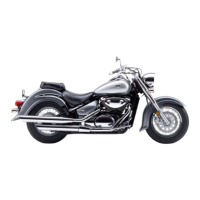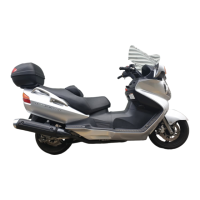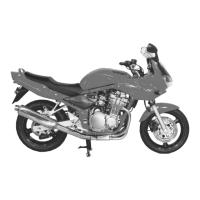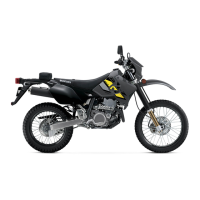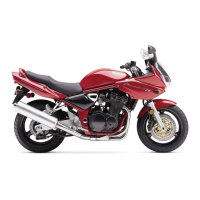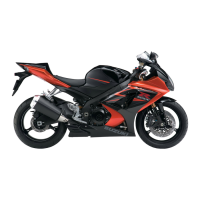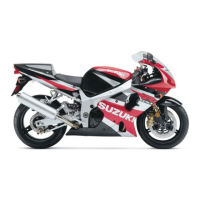Riding a motorcycle safely
requires that your mental and
physical skills are fully part of the
experience. You should not
attempt to operate a motor vehi-
cle, especially one with two
wheels, if you are tired or under
the influence of alcohol or other
drugs. Alcohol, illegal drugs, and
even some prescription and over-
the-counter drugs can cause
drowsiness, loss of coordination,
loss of balance, and especially
the loss of good judgment. If you
are tired or under the influence of
alcohol or other drugs, PLEASE
DO NOT RIDE your motorcycle.
Be extra safety-conscious on
bad weather days.
Riding on bad weather days,
especially wet ones, requires
extra caution. Braking distances
increase on a rainy day. Stay off
the painted surface marks, man-
hole covers, and greasyappearing
areas, as they can be especially
slippery. Use extra caution at rail-
way crossings and on metal grat-
ings and bridges. When it starts to
rain, any oil or grease on the road
rises to the surface of the water.
Pull over and wait a few minutes
until this oil film is washed away
before riding. Whenever in doubt
about road conditions, slow down!
Practice away from traffic.
Your riding skill and your mechan-
ical knowledge form the founda-
tion for safe riding practices. We
suggest that you practice riding
your motorcycle in a nontraffc sit-
uation until you are thoroughly
familiar with your machine and its
controls. Again, consider taking
one of the MSF's HiderCourses.
Even experts will be pleased with
the caliber of the information pre-
sented in these courses. As the
MSF says: "The more you know,
the better it gets!"
Inspection before riding.
Review the instructions in the
INSPECTION BEFORE RIDING
section of this manuaL. Perform
an entire pre-ride inspection
before you head out on the road.
Spending a few minutes prepar-
ing your machine for a ride can
help prevent accidents due to
mechanical failure or costly,
inconvenient breakdowns far from
home.
Accessories and Loading.
The accessories you use with
your motorcycle and the manner
in which you load your gear onto
the bike might create hazards.
Aerodynamics, handling, balance,
and cornering clearance can suf-
fer, and the suspension and tires
can be overloaded. Read the
ACCESSORY USE AND
MOTORCYCLE LOADING sec-
tion.
7

